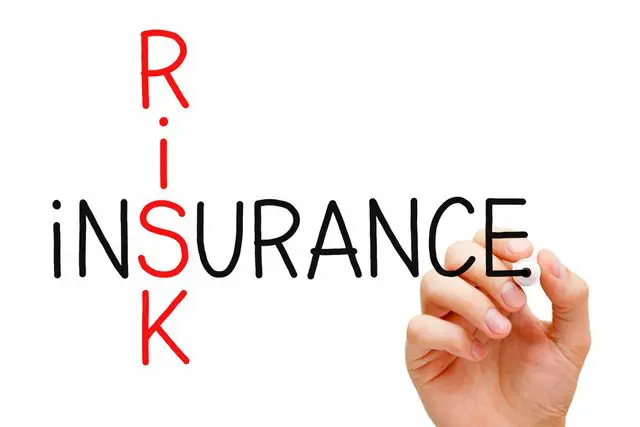We know to sparingly avoid risk and how to improve our prevention (frequency) effectiveness but what is reduction (severity) all about when not viewed in combination with prevention (frequency). Reduction by its very nature is the lowering of the impact by lowering the severity of the exposure.
Reduction is putting systems in place, such as administrative, engineered or personal protective equipment, that when an incident (fire, car crash, electrical short, chemical spill) occurs the severity of the incident is reduced due to the reduction system in place. The best example of this is a fire sprinkler system in a commercial building. If the sprinkler is fully operational in a building you can expect the fire loss to be one tenth of the total of a building fire that does not have a sprinkler or sprinklers that are not operational. I refer to a statistic published by FM Global, it states – on average, you can expect a fire loss to cause $400,000 worth of damage to a building with operating sprinklers versus an average loss of $4,000,000 when the sprinkler system is non-existent or not operating (valves turned off, valves partially closed, flow not monitored, pipes not maintained, incorrect sprinkler heads used for the occupancy, etc.).
Another great example is the system of safety protection in cars today. We started in the old days with bumpers to protect our pretty cars from physical damage (property reduction), and added lap belts to prevent us from flying through the windshield (injury reduction), lap and shoulder belts to prevent us from hitting the steering wheel and dash (further injury reduction), and airbags to lessen the injury potential further. Now we have safety systems (blind spot detection, lane keeping assist, automatic braking) that reduce the severity of the car crash beyond the reflex response of a human and in fact work to prevent the incident from happening in the first place (see 8 Non-Financing Risk Control Methods, Prevention # 2, earlier).
Let us not forget about administrative systems that reduce the severity and are as necessary as engineered systems. Having a First-Aid trained and qualified person in the office, just in case something happens (incident reduction – survive a heart attack). Telling your staff to not work alone (buddy system) when in an isolated space (in the middle of the arctic or in a confined space with restricted airflows). If they need to work alone, developing a system to help them if the need arises so they can first report their distress which starts the emergency response systems.
The most effective administrative system has full buy-in from leadership, engages the staff to know what training they need, provides the training, monitors the activity, disciplines people when they are not following rules (hopefully as a near-miss that is recorded) and trains the new staff – whether new to the site or new to the organization. The combination of appropriate risk avoidance, risk prevention and severity reduction goes a long way to significantly reducing inherent risk in your organization.
Beyond the systems, the one piece that I see missing in organizations is a cohesive risk awareness culture, that does not primarily rely on avoidance and insurance purchasing, that engages all levels of leadership and staff into identifying the risks and dealing with them in an appropriate manner. Some call this system holistic (looking at the entire body) risk management while managers of risk (including Risk Managers) call it Enterprise Risk Management (ERM).
Disclaimer: Although the above article references events that have occurred in the past or are new to you, there are current policies/practices that can be learned and applied in todays market. Should you wish to explore any element of this article further, please contact Darius Delon, President of Risk Management 101 at 403-999-2724 for a free initial consultation.

Empowering Business Success
Discover expert insights and strategies to drive your business forward in the dynamic marketplace. Explore our blog for actionable tips and industry trends.
-

Reciprocal Insurance – General Information and Definitions
Introduction Insurance is a way to protect the assets you own from potential financial losses. Usually, this takes the form of…
-

8 Non-Financing Risk Control Methods, Segregation #4
Segregation is defined as “…the action or state of setting someone or something apart from other people or things…”. Thanks Google.…
-

8 Non-Financing Risk Control Methods, #3 Reduction
We know to sparingly avoid risk and how to improve our prevention (frequency) effectiveness but what is reduction (severity) all about…
-

8 Non-Financing Risk Control Methods – Prevention
We know to not use the risk avoidance technique unless we absolutely have to. What does preventing a risk really mean…
-

8 Non-Financing Risk Control Methods – #1 Avoidance
In the dark ages (300 years ago), risk management’s primary tool was insurance – buy enough of it until you feel…
-

Insurance Broker 20% Commission
May 12th, 2020 The insurance hard market has hit commercial insurance policy holders very hard over the last year. Condominium policies…
-

Organization Objectives – During COVID-19
All organizations, world-wide, have been hit with significant disruptions to their business due to the lockdown associated with COVID-19. Some business…
-

Business Continuity in the Age of Pandemic Covid-19
The Emergency Operations Centre has been activated, the Business Continuity Plans have been dusted off and the Crisis Communications Plan has…
-

Providing Risk Management Comment for Media
Resilience Should be the Goal of all Organizations https://www.canadianunderwriter.ca/catastrophes/resilience-should-be-a-goal-of-all-organizations-1004099922/

Leave a Reply